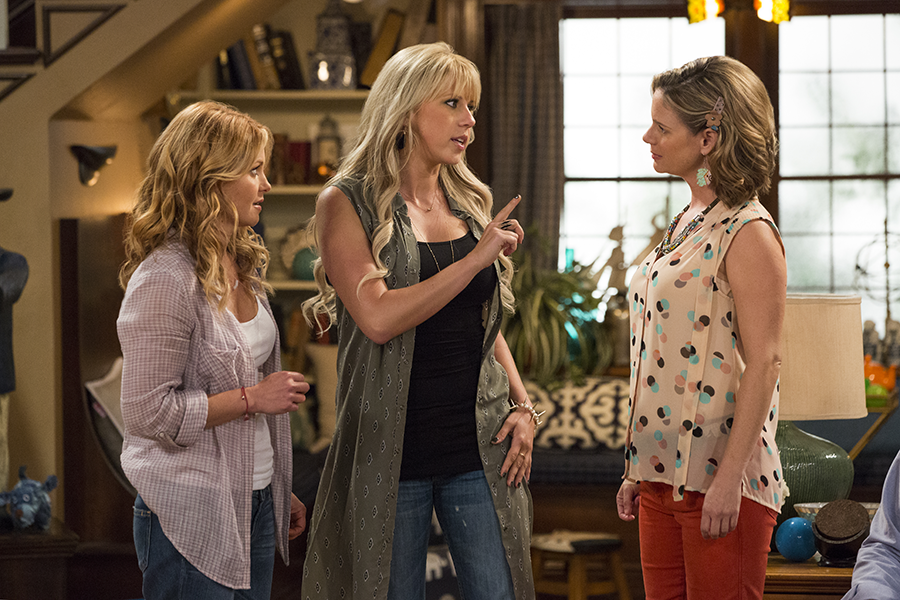'Fuller House': Would ABC's TGIF block succeed today?
Loading...
The new Netflix show “Fuller House” debuts later this month, reuniting many of the cast members of the hit ABC ‘90s sitcom, “Full House.”
“Fuller” centers on Tanner daughter D.J. (Candace Cameron Bure). Following the death of D.J.’s husband, D.J.’s sister Stephanie (Jodi Sweetin) and D.J.’s friend, Kimmy (Andrea Barber), come live with D.J. to help take care of D.J.’s children.
The original sitcom “Full House,” which starred Bob Saget, John Stamos, Dave Coulier, and Lori Loughlin, went off the air in 1995.
Netflix is reviving the show for at least 13 episodes and, true to the usual Netflix practice, the whole first season will be debuting on Feb. 26.
When it was on the air, the first version of “Full House” was part of the ABC network’s TGIF block. “Full” aired alongside programs aimed at viewers of all ages, such as “Family Matters.” Later on, shows in this lineup included TV programs like “Boy Meets World” and “Sabrina the Teenage Witch.”
This TGIF block became a big hit with viewers. All the content was aimed at families and the shows became popular with younger viewers in particular, always an important demographic to networks.
“ABC’s TGIF block was responsible for a number of iconic comedies during its initial run between 1989 and 2000,” Variety news editor Laura Prudom wrote of the success of the programming, while Entertainment Weekly (EW) writers Dan Snierson and Marc Snetiker wrote that the TGIF block “featur[ed] some of the most iconic, innocuous pop-culture touchstones from the late ’80s into the ’90s … These shows helped raise a generation of millennials.”
“Full House” executive producer Robert L. Boyett told EW, “We were just looking for a promotional hook for multiple shows on Friday, a bridge to get from one show to the other and keep people watching … Nobody anticipated the phenomenon it would become.”
In today’s TV landscape, is there an equivalent of the TGIF programming? Would one work today?
TV shows for families are mostly seen on either broadcast networks or streaming services. Cable networks are known for edgier fare – parents aren’t bringing their children in to watch HBO’s “Game of Thrones” or Showtime’s “Penny Dreadful.” (However, HBO did recently gain "Sesame Street.")
ABC is still the home of popular family sitcoms such as “Modern Family” and newer offerings, such as “Fresh Off the Boat” and “Black-ish.” The network actually arranges “Modern” and “Black-ish” in a Wednesday night block, including such programs as “The Middle” and “The Goldbergs.”
That block as a whole can struggle in the ratings, but “Modern” is often strong.
The fantasy program “Once Upon a Time” has also been popular for ABC.
Meanwhile, Netflix seems to be increasing its shows targeted at families. It has aired programs like “The Adventures of Puss in Boots” and “Dawn of the Croods” and future shows like “Beat Bugs” and “Green Eggs and Ham” also seem aimed at younger viewers.
In addition, one contemporary equivalent of the TV block scheduling – also seen in such versions as NBC’s “Must-See TV” comedy night, which included such shows as “Seinfeld” and “Friends” – is TV binge-watching. Viewers aren’t watching multiple shows one after the other, but they’re more than likely to watch four or five episodes of the same TV show in a row.
And ABC continues to demonstrate that block programming can work, though their current most famous block of shows is aimed far more at adults. The network’s “TGIT” lineup, which consists of shows either created or produced by Shonda Rhimes like “Grey’s Anatomy,” “Scandal,” and “How to Get Away with Murder,” has regularly been a ratings hit for ABC.








